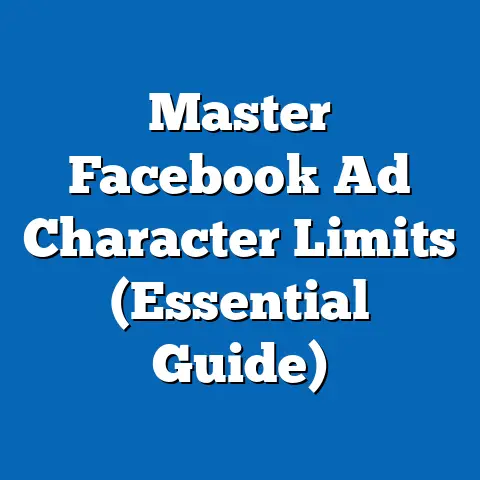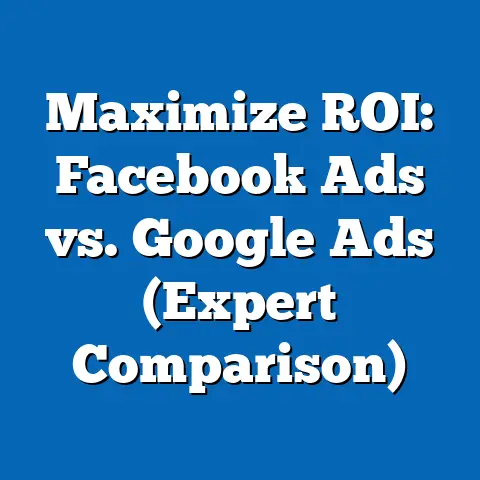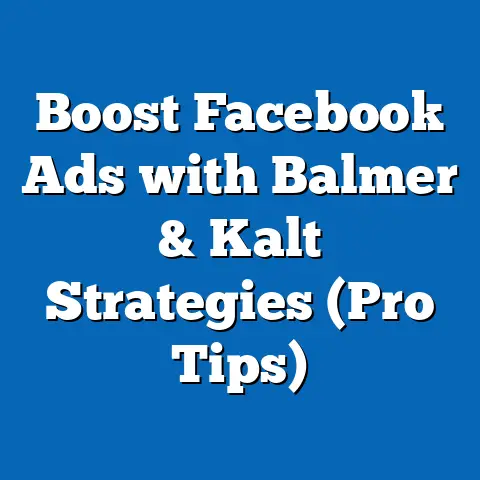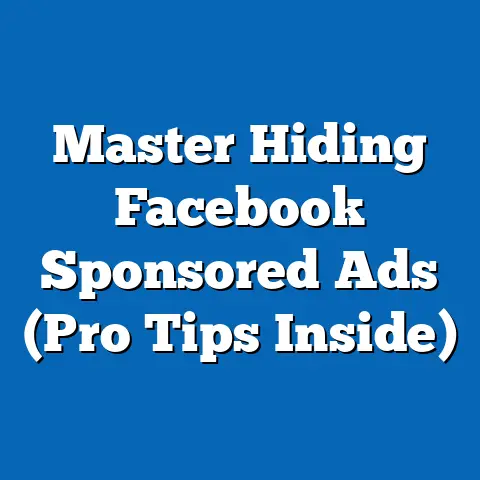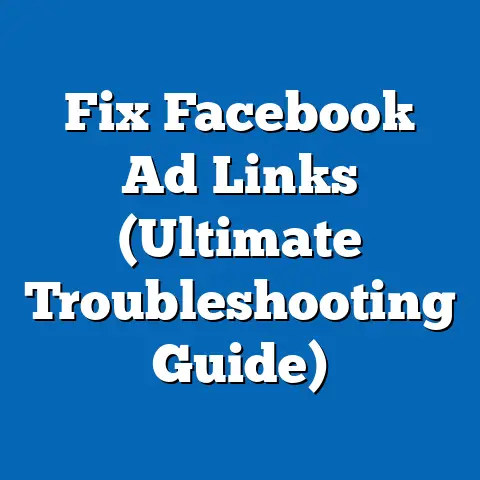Unveiling the Best Facebook Print Ads Ever (Proven Strategies)
What makes a print ad on Facebook not just seen, but unforgettable? In a digital landscape dominated by fleeting visuals and ephemeral content, this question is more crucial than ever. I’ve spent years navigating the ever-evolving world of Facebook advertising, and I’ve seen firsthand how print ads, when done right, can cut through the noise and leave a lasting impression. This isn’t about simply transferring traditional print design to a digital platform; it’s about understanding the unique context of Facebook and crafting ads that resonate with its users. Let’s dive into the strategies behind some of the best Facebook print ads ever created.
Understanding Facebook Print Ads
Facebook print ads, as I define them, are visually driven advertisements that mimic the aesthetic of traditional print media within the Facebook environment. Think of them as a blend of magazine layouts and digital targeting. They contrast with video ads, carousel ads, or interactive formats by focusing on a single, impactful image and concise text.
Why are they significant in the digital age? Because they offer a sense of familiarity and authority. In a sea of quickly consumed content, a well-designed print ad can stand out by projecting a sense of permanence and curated quality. People are used to seeing print ads in magazines and newspapers, so seeing a similar format on Facebook can trigger a different kind of engagement.
The Power of Storytelling
Storytelling is the heart and soul of compelling advertising. It’s not enough to simply showcase a product; you need to weave a narrative around it that connects with the audience on an emotional level. I’ve always believed that the best ads are the ones that make you feel something.
Take, for example, a Facebook print ad I saw for a travel company. Instead of just showing beautiful beaches and luxurious resorts, the ad featured a photo of a young couple laughing, their faces lit by the warm glow of a sunset. The accompanying text told a short, evocative story about their journey of discovery and connection. The ad didn’t just sell a vacation; it sold an experience, a memory, a feeling.
Another excellent example is a local coffee shop that I helped with their Facebook ads. Instead of just posting pictures of their coffee, we created a series of print ads that told the story of the coffee beans, from the farms where they were grown to the skilled baristas who crafted each cup. We highlighted the ethical sourcing and the dedication to quality. This narrative not only engaged the audience but also justified the slightly higher price point compared to chain coffee shops.
The key is to identify the core values and emotions associated with your brand and then translate them into a compelling narrative. Ask yourself: What problem does your product solve? What aspirations does it fulfill? What emotions does it evoke?
Visual Appeal and Design
In the realm of Facebook print ads, visuals reign supreme. A captivating image can stop users in their tracks and draw them into your message. However, visual appeal goes beyond simply using a beautiful photo. It’s about understanding the principles of design and how they can be used to create a visually striking and memorable ad.
Color, typography, and imagery all play crucial roles. Color can evoke emotions and create a specific mood. Typography can convey personality and enhance readability. Imagery can tell a story and capture attention.
I recall working with a fashion brand that was launching a new line of sustainable clothing. We decided to create a series of Facebook print ads that showcased the natural beauty of the fabrics and the craftsmanship that went into each garment. We used a muted color palette, elegant typography, and stunning photographs of models wearing the clothes in natural settings. The ads were minimalist but impactful, conveying a sense of sophistication and eco-consciousness.
Another effective example I’ve seen involves a software company that needed to advertise their new project management tool. Instead of using generic stock photos of people working at computers, they used minimalist illustrations with a bright, contrasting color palette. The simplicity of the visuals made the ad stand out, and the bright colors grabbed attention. The company saw a significant increase in click-through rates compared to their previous campaigns.
Remember, your design choices should align with your brand identity and target audience. Consider the overall aesthetic you want to convey and how it will resonate with your ideal customer.
Targeting and Personalization
Facebook’s targeting capabilities are a game-changer for print advertising. Unlike traditional print media, where you’re essentially casting a wide net, Facebook allows you to laser-focus your message on specific demographics, interests, and behaviors. This level of personalization can dramatically increase the effectiveness of your ads.
I once worked with a local bookstore that wanted to promote a new book club. Instead of simply running a generic ad to everyone in the area, we used Facebook’s targeting options to reach people who had expressed an interest in books, reading, and literature. We also targeted people who had liked the pages of similar bookstores or book clubs. The result was a highly engaged audience that was genuinely interested in the book club.
Another successful case study I observed involved a fitness studio targeting users who had expressed interest in yoga, pilates, and healthy eating. The print ads featured testimonials from local residents who had transformed their lives through the studio’s programs, and the personalized messaging highlighted the specific benefits that resonated with each targeted group. This campaign led to a significant increase in membership sign-ups.
The key is to understand your audience’s needs, preferences, and pain points. What motivates them? What challenges do they face? What are their aspirations? Use this information to craft personalized ads that speak directly to their individual interests.
Call-to-Action (CTA) Effectiveness
A strong call-to-action (CTA) is the engine that drives user engagement and conversions. It’s the final nudge that encourages your audience to take the desired action, whether it’s visiting your website, making a purchase, or signing up for your email list.
The psychology of effective CTAs is rooted in clarity, urgency, and value. Your CTA should be clear about what you want the user to do, create a sense of urgency to encourage immediate action, and highlight the value they will receive by taking that action.
I often see Facebook print ads with weak CTAs that simply say “Learn More” or “Visit Website.” These CTAs are vague and uninspiring. A much more effective CTA would be something like “Claim Your Free Trial Now!” or “Shop Our New Collection and Get 20% Off!”
For example, I helped an e-commerce business optimize their Facebook print ads. Previously, their ads had a generic “Shop Now” button. We changed it to “Get Your Exclusive Discount” and saw a 30% increase in click-through rates. The more specific and value-driven CTA made a huge difference.
Another example is a local restaurant that I consulted with. Instead of using “See Menu,” we changed it to “Order Your Dinner Now & Skip the Line!” This CTA was more compelling because it highlighted a specific benefit (skipping the line) and created a sense of urgency.
Integration with Digital Campaigns
Facebook print ads don’t exist in a vacuum. They should be integrated into a broader digital marketing strategy that includes social media, email marketing, and other online channels.
I’ve seen brands successfully combine print and digital efforts to maximize impact. For example, a clothing retailer could run a Facebook print ad that promotes a new collection and then follow up with an email campaign that provides exclusive discounts and styling tips. Or a local restaurant could run a Facebook print ad that encourages users to make a reservation and then retarget those users with social media ads that showcase their daily specials.
I worked with a SaaS company that launched a new feature for their software. We ran a Facebook print ad campaign that showcased the benefits of the new feature and then followed up with a webinar series that provided in-depth training. This integrated approach not only generated leads but also educated the audience and increased product adoption.
The benefits of a cohesive marketing strategy are numerous. It allows you to reinforce your message across multiple channels, reach a wider audience, and create a more consistent brand experience.
Measuring Success
Measuring the success of your Facebook print ads is crucial for optimizing your campaigns and maximizing your ROI. There are several key metrics and KPIs that you can use to track your ad performance, including:
- Impressions: The number of times your ad is displayed.
- Reach: The number of unique people who see your ad.
- Click-Through Rate (CTR): The percentage of people who click on your ad after seeing it.
- Conversion Rate: The percentage of people who take the desired action after clicking on your ad.
- Cost Per Click (CPC): The average cost you pay for each click on your ad.
- Cost Per Acquisition (CPA): The average cost you pay for each conversion.
I always advise my clients to track these metrics closely and use them to inform their future advertising strategies. Data-driven insights can help you identify what’s working, what’s not, and where you can make improvements.
For example, I worked with an online retailer that was struggling to generate sales from their Facebook print ads. After analyzing their data, we discovered that their CTR was high but their conversion rate was low. This suggested that their ads were attracting the right audience but their landing page was not optimized for conversions. We worked with them to improve their landing page, and they saw a significant increase in sales.
Another brand I worked with successfully tracked and analyzed their ad performance. They were able to identify which ad creatives were performing best and which audiences were most responsive. They used this information to refine their targeting and messaging, resulting in a dramatic increase in their ROI.
Key Strategies for Creating Successful Facebook Print Ads
Let’s recap the proven strategies we’ve discussed throughout this article:
- Tell a Compelling Story: Connect with your audience on an emotional level by weaving a narrative around your product or brand.
- Use Visually Striking Design: Capture attention and convey your message with impactful imagery, color, and typography.
- Target Your Audience Precisely: Leverage Facebook’s targeting capabilities to reach the right people with the right message.
- Craft a Strong Call-to-Action: Encourage user engagement and conversions with clear, urgent, and value-driven CTAs.
- Integrate with Digital Campaigns: Reinforce your message across multiple channels for maximum impact.
- Measure Your Success: Track your ad performance and use data-driven insights to optimize your campaigns.
Creativity, testing, and adaptation are essential. Don’t be afraid to experiment with different ad formats, messaging, and targeting options. Pay close attention to your audience’s feedback and adjust your strategies accordingly.
Conclusion
Effective Facebook print ads are not just about aesthetics; they’re about understanding the psychology of your audience, the power of storytelling, and the strategic use of Facebook’s targeting capabilities. By embracing these principles and thinking creatively about your advertising efforts, you can unlock the transformative potential that lies within the realm of Facebook print advertising. So, go forth, experiment, and create ads that not only get seen but also leave a lasting impression. I encourage you to embrace the power of print in the digital age and elevate your Facebook advertising to new heights.

